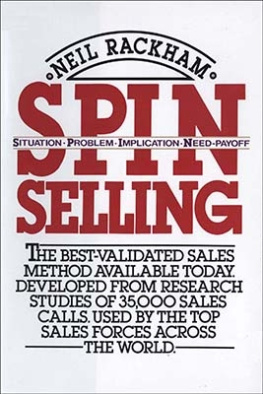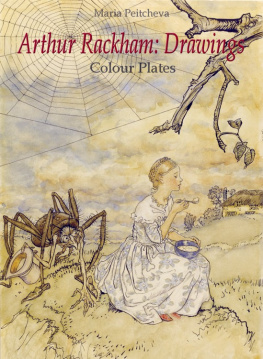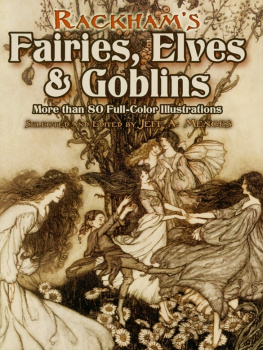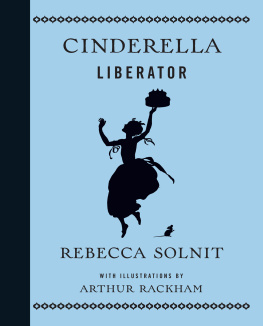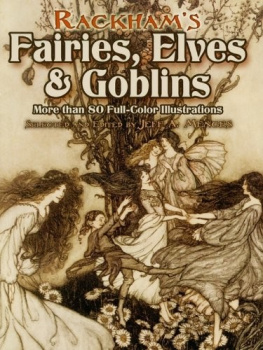Arthur Rackham - The Arthur Rackham Art Book: Volume I
Here you can read online Arthur Rackham - The Arthur Rackham Art Book: Volume I full text of the book (entire story) in english for free. Download pdf and epub, get meaning, cover and reviews about this ebook. year: 2018, publisher: Read Books Ltd., genre: Detective and thriller. Description of the work, (preface) as well as reviews are available. Best literature library LitArk.com created for fans of good reading and offers a wide selection of genres:
Romance novel
Science fiction
Adventure
Detective
Science
History
Home and family
Prose
Art
Politics
Computer
Non-fiction
Religion
Business
Children
Humor
Choose a favorite category and find really read worthwhile books. Enjoy immersion in the world of imagination, feel the emotions of the characters or learn something new for yourself, make an fascinating discovery.

- Book:The Arthur Rackham Art Book: Volume I
- Author:
- Publisher:Read Books Ltd.
- Genre:
- Year:2018
- Rating:3 / 5
- Favourites:Add to favourites
- Your mark:
- 60
- 1
- 2
- 3
- 4
- 5
The Arthur Rackham Art Book: Volume I: summary, description and annotation
We offer to read an annotation, description, summary or preface (depends on what the author of the book "The Arthur Rackham Art Book: Volume I" wrote himself). If you haven't found the necessary information about the book — write in the comments, we will try to find it.
The Arthur Rackham Art Book: Volume I — read online for free the complete book (whole text) full work
Below is the text of the book, divided by pages. System saving the place of the last page read, allows you to conveniently read the book "The Arthur Rackham Art Book: Volume I" online for free, without having to search again every time where you left off. Put a bookmark, and you can go to the page where you finished reading at any time.
Font size:
Interval:
Bookmark:
Art Book
 Volume I 1896 - 1910 Copyright 2014 Pook Press
Volume I 1896 - 1910 Copyright 2014 Pook PressAn imprint of Read Publishing Ltd Introduction by Amelia Carruthers This book is copyright and may not be reproduced or copied in any way without the express permission of the publisher in writing. British Library Cataloguing-in-Publication Data A catalogue record for this book is available from the British Library. Like the sundial, my paint box counts no hours but sunny ones. - Arthur Rackham
The Golden Age of Illustration
Like many other great illustrators to follow, Crane operated within many different mediums; a lifelong disciple of William Morris and a member of the Arts and Crafts Movement, he designed all manner of objects including wallpaper, furniture, ceramic ware and even whole interiors. This incredibly important and inclusive phase of British design proved to have a lasting impact on illustration both in the United Kingdom and Europe as well as America. The artists involved in the Arts and Crafts Movement attempted to counter the ever intruding Industrial Revolution (the first wave of which lasted roughly from 1750-1850) by bringing the values of beautiful and inventive craftsmanship back into the sphere of everyday life. It must be noted that around the turn of the century the boundaries between what would today be termed fine art as opposed to crafts and design were far more fluid and in many cases non-operational, and many illustrators had lucrative painterly careers in addition to their design work. The Romanticism of the Pre Raphaelite Brotherhood combined with the intricate curvatures of the Art Nouveaux movement provided influential strands running through most illustrators work. The latter especially so for the Scottish illustrator Anne Anderson (1874-1930) as well as the Dutch artist Kay Nielson (1886-1957), who was also inspired by the stunning work of Japanese artists such as Hiroshige.
One of the main accomplishments of nineteenth century illustration lay in its ability to reach far wider numbers than the traditional high arts. In 1892 the American critic William A. Coffin praised the new medium for popularising art; more has been done through the medium of illustrated literature... to make the masses of people realise that there is such a thing as art and that it is worth caring about. Commercially, illustrated publications reached their zenith with the burgeoning Gift Book industry which emerged in the first decade of the twentieth century. The first widely distributed gift book was published in 1905.
It comprised of Washington Irvings short story Rip Van Winkle with the addition of 51 colour plates by a true master of illustration; Arthur Rackham. Rackham created each plate by first painstakingly drawing his subject in a sinuous pencil line before applying an ink layer then he used layer upon layer of delicate watercolours to build up the romantic yet calmly ethereal results on which his reputation was constructed. Although Rackham is now one of the most recognisable names in illustration, his delicate palette owed no small debt to Kate Greenaway (1846-1901) one of the first female illustrators whose pioneering and incredibly subtle use of the watercolour medium resulted in her election to the Royal Institute of Painters in Water Colours in 1889. The year before Arthur Rackams illustrations for Rip Van Winkle were published, a young and aspiring French artist by the name of Edmund Dulac (1882-1953) came to London and was to create a similarly impressive legacy. His timing could not have been more fortuitous. Several factors converged around the turn of the century which allowed illustrators and publishers alike a far greater freedom of creativity than previously imagined.
The origination of the colour separation practice meant that colour images, extremely faithful to the original artwork could be produced on a grand scale. Dulac possessed a rigorously painterly background (more so than his contemporaries) and was hence able to utilise the new technology so as to allow the colour itself to refine and define an object as opposed to the traditional pen and ink line. It has been estimated that in 1876 there was only one colour separation firm in London, but by 1900 this number had rocketed to fifty. This improvement in printing quality also meant a reduction in labour, and coupled with the introduction of new presses and low-cost supplies of paper this meant that publishers could for the first time afford to pay high wages for highly talented artists. Whilst still in the U.K, no survey of the Golden Age of Illustration would be complete without a mention of the Heath-Robinson brothers. Charles Robinson was renowned for his beautifully detached style, whether in pen and ink or sumptuous watercolours.
Whilst William (the youngest) was to later garner immense fame for his carefully constructed yet tortuous machines operated by comical, intensely serious attendants. After World War One the Robinson brothers numbered among the few artists of the Golden Age who continued to regularly produce illustrated works. As we move towards the United States, one illustrator - Howard Pyle (1853-1911) stood head and shoulders above his contemporaries as the most distinguished illustrator of the age. From 1880 onwards Pyle illustrated over 100 volumes, yet it was not quantity which ensured his precedence over other American (and European) illustrators, but quality. Pyles sumptuous illustrations benefitted from a meticulous composition process livened with rich colour and deep recesses, providing a visual framework in which tales such as Robin Hood and The Four Volumes of the Arthurian Cycle could come to life. These are publications which remain continuous good sellers up till the present day.
His flair and originality combined with a thoroughness of planning and execution were principles which he passed onto his many pupils at the Drexel Institute of Arts and Sciences. Two such pupils were Jessie Willcox Smith (1863-1935) who went on to illustrate books such as The Water Babies and At the Back of North Wind and perhaps most famously Maxfield Parrish (1870-1966) who became famed for luxurious colour (most remarkably demonstrated in his blue paintings) and imaginative designs; practices in no short measure gleaned from his tutor. As an indication of Parrishs popularity, in 1925 it was estimated that one fifth of American households possessed a Parrish reproduction. As is evident from this brief introduction to the Golden Age of Illustration, it was a period of massive technological change and artistic ingenuity. The legacy of this enormously important epoch lives on in the present day in the continuing popularity and respect afforded to illustrators, graphic and fine artists alike. The ensuing volumes provide a fascinating insight into an era of intense historical and creative development, bringing out of print books and their art back to life for both young and old to revel and delight in.
Font size:
Interval:
Bookmark:
Similar books «The Arthur Rackham Art Book: Volume I»
Look at similar books to The Arthur Rackham Art Book: Volume I. We have selected literature similar in name and meaning in the hope of providing readers with more options to find new, interesting, not yet read works.
Discussion, reviews of the book The Arthur Rackham Art Book: Volume I and just readers' own opinions. Leave your comments, write what you think about the work, its meaning or the main characters. Specify what exactly you liked and what you didn't like, and why you think so.

